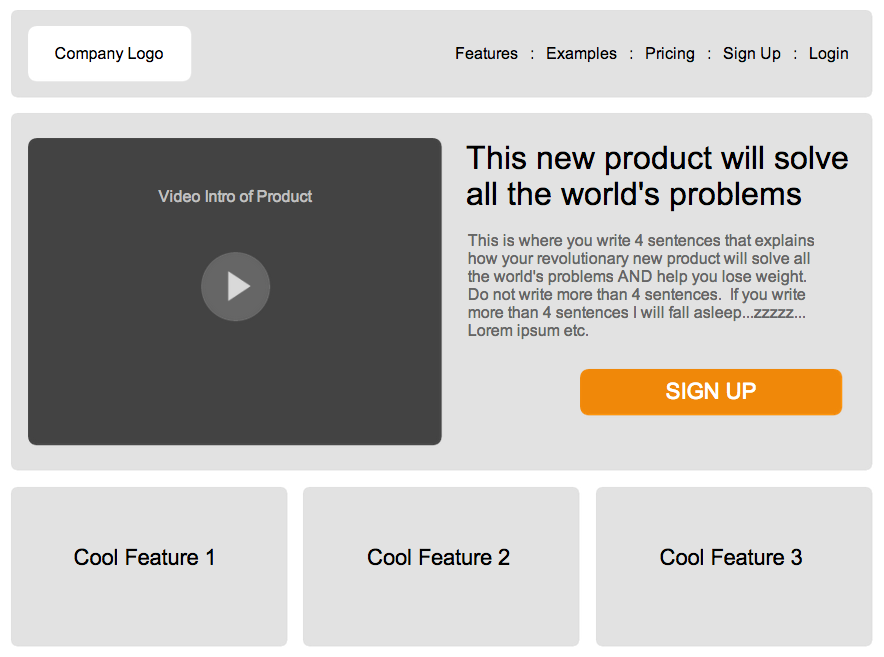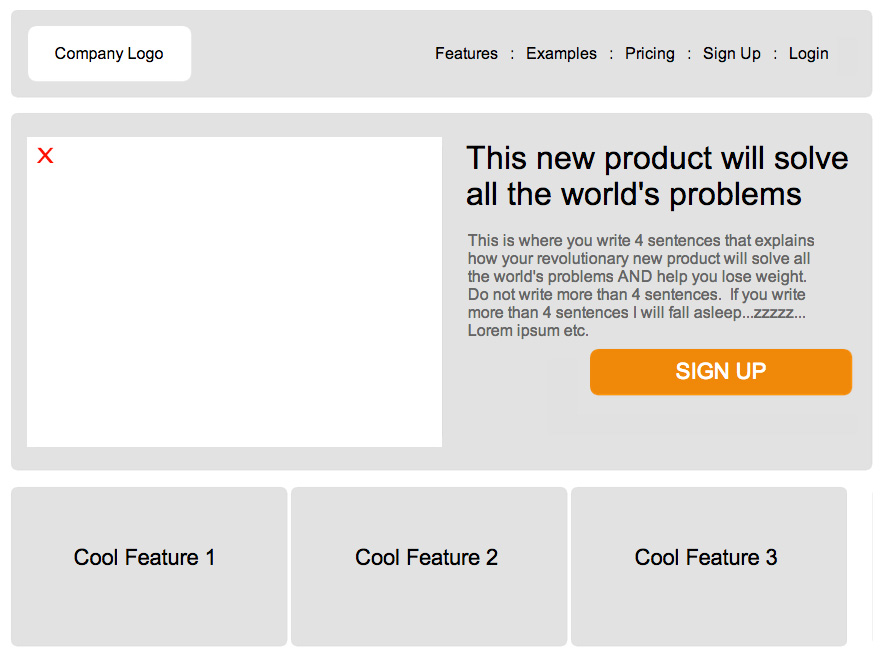Compatibility via Modernizr
Making web things fit their medium
by Stu Cox / @stucoxmedia
#McrFRED | 27th June 2013 | Manchester, UK
- com•pat•i•bil•i•ty
|kəmˌpatɪˈbɪlɪti| (abbr.: compat.) noun (pl. -i•ties)- a state in which two things are able to exist or occur together without problems or conflict.
In this case:
Your web thing ←→ Your user's browser/device
How we did it back in the day
1. Make a web thing

2. Test it in Browser A
3. It works! Hurray!

4. Test it in Browser B

5. Doesn't work :-(

So we hack it.
CSS hacks:
.btn {
*margin-left: -13px;
}
User-Agent sniffs:
if (navigator.userAgent.match(/MSIE [67]\./)) {
// Fix for old IE
}
These are essentially heuristics.
Heuristics imply assumptions.
- "All browsers which parse CSS hack A also have layout bug B"
- "All browsers which match user-agent C support feature D"
- "I know about every browser my users might use"
- "If my assumptions are true now, they'll also be true in the future"
"I know about every browser my users might use"
85 browser versions with > 0.1% market share
7,000 different devices login to Facebook every day [1]
Users have different needs (think accessibility)
Browser A
Browser B

Three sources of compatibility problems:
Features
Plugins
Bugs
Features
-
CSS:
@font-face, transitions, animations, flexbox, ... -
HTML:
<audio>,<video>, input types, drag & drop, ... -
JavaScript:
History API, IndexedDB, WebSockets, ...
-
...
Plugins
-
Platforms/Runtimes:
Flash, Silverlight, Java, ...
-
Viewers:
PDF, Office documents, ...
-
...
Bugs
-
Rendering:
Box model, double margin, ...
-
Other broken things:
History API in Android 2.x, ...
-
...
These can all be described under one term:
CAPABILITIES
-
Features are capabilities
"Browser X has the ability to render SVG"
-
Plugins add capabilities
"A browser with the Flash plugin has the ability to render Flash media"
-
Bugs are incapabilities
"Browser Y has the ability NOT to fuck up the box model"
“The differences between 2 users' browsers can be described (entirely) by the differences between their capability sets.”
Progressive Enhancement
It was going to get mentioned sooner or later.
Providing different experiences for different users, depending on their capabilities.
Think of your web thing as a collection of features.
Core: the essential bits every user needs
Enhancements: non-essential additions
The core is smaller than you think.
Each feature depends on capabilities of the browser.
-
Core capabilities → "system requirements" for your web thing
Fewer core capabilities = accessible to more users.
-
Enhancement capabilities → tiers of experience
If a user has the required capabilities, they get the enhancement; otherwise they don't.
What's an enhancement?
Examples:
- Some styling
- Fonts
- Animations
- Audio / video content
- A background image
- A whole functional part – e.g. a chat feature
Atomic Enhancements
- Either applied fully, or not at all
- No side effects when required capabilities aren't present
- Degrades gracefully
If enhancements aren't atomic, bad things happen.
- Broken layouts
- Javascript errors
- Unusable interfaces
Examples:
.module {
box-sizing: border-box;
padding: 1em;
width: 20em;
}
If box-sizing not supported, layout won't be as expected.
// My module
var modules = document.querySelectorAll('.module');
...
TypeError: Object #<HTMLDocument> has no method 'querySelectorAll'
How can we ensure enhancements are atomic?
Avoid certain dependencies
Safety net
Feature detect
Feature detection
Testing if the browser offers certain capabilities
Basic pattern
if (supportsFeature) {
// Use feature!
// Ensure all code depending on this feature is
// contained here... no side effects!
}
else {
// Some fallback (optional)
}
Techniques
Does it exist?
'geolocation' in navigatorDoes it stick?
var el = createElement('div'); el.style.cssText = 'filter:blur(2px)'; !!el.style.length // true if CSS filters supportedDoes it work?
var image = new Image(); image.onload = function() { image.width == 1 // true if WebP supported } image.src = 'data:image/webp;base64,UklGRiwAAABXRUJQVlA4I...';
Media Queries
Yep, they're a kind of feature detection too.
In CSS:
@media (min-width: 800px) {
// Has a large viewport
}
@media not (min-width: 800px) {
// Doesn't have a large viewport
}
In JS:
if (window.matchMedia('(min-width: 800px)').matches) {
// Has a large viewport
}
else {
// Doesn't have a large viewport
}
@media (min-width: 800px) {
// Has a large viewport
}
@media not (min-width: 800px) {
// Doesn't have a large viewport
}
if (window.matchMedia('(min-width: 800px)').matches) {
// Has a large viewport
}
else {
// Doesn't have a large viewport
}
Native Detection
Via @supports
In CSS:
@supports (display: flex) {
// Supports flexbox
}
@supports not (display: flex) {
// Doesn't support flexbox
}
In JS:
if (window.CSS.supports('display', 'flex') {
// Supports flexbox
}
else {
// Doesn't support flexbox
}
@supports (display: flex) {
// Supports flexbox
}
@supports not (display: flex) {
// Doesn't support flexbox
}
if (window.CSS.supports('display', 'flex') {
// Supports flexbox
}
else {
// Doesn't support flexbox
}
Fallbacks
-
No fallback: "feature gating"
Efficient, easy to maintain.
-
Replace functionality: "polyfilling"
Can be network and processor intensive, rarely an exact match
-
Alternative functionality: "sandwich filling"
Usually unnecessary…
It's a feature detection library.
Detects for 174+ modern browser capabilities.
Basic patterns
It makes feature detection a breeze
if (Modernizr.geolocation) {
// Use feature!
// Ensure all code depending on this feature is
// contained here... no side effects!
}
else {
// Some fallback (optional)
}
.geolocation .module {
/* Styles if geolocation supported */
}
.no-geolocation .module {
/* Styles if geolocation not supported */
}
Custom builds
All killer, no filler

Roll your own
Via Modernizr.addTest()
Modernizr.addTest('yoda', function () {
var yoda = document.createElement('yoda');
return 'theforce' in yoda;
});
Conditional Loading
Via Modernizr.load()
Avoid heavy loading for browsers which can't use it
Modernizr.load({
test: Modernizr.geolocation,
yep: 'geo.js',
nope: 'geo-polyfill.js'
});
Rarely need nope – big polyfills are a bad idea!
Modernizr v3.0
- New AMD-based internal architecture
- Builds are waaaaay smaller
- 20+ more detects since 2.6.2
- Better handling of async tests
- Uses
@supportsunder the hood - Faster release cycle
- Better documentation
- Easier integration with grunt-modernizr
Coming soon, we promise!
Now I'm going to talk a bit about my involvement in Modernizr.
Undetectables
Unfortunately some things fall under our radar
A good feature detect...
Gives accurate positives
Gives accurate negatives
Is lightweight (fast & small)
Doesn't make assumptions or use heuristics
Realistically, most detects make some assumptions – we try to minimise these
Rule 1: It must interact with the document
Because that's all we can access from JS.
-
Styling
Can't access the pixels on the screen
Best-guess based on the (re)actions of the DOM
-
Form UIs
Appear on top of the document – invisible to us
Rule 2: It shouldn't take any user interaction
-
Events
Can't tell if events (e.g.
DOMContentLoaded) will be fired at the correct time -
contenteditable
We can often give accurate negatives, but not positives
Rule 3: Think about older browsers/devices
-
Using new APIs
e.g.
window.performance– tells us nothing about older devices -
Touchscreens
Don't get me started...
You can't detect a touchscreen
Not reliably, anyway
http://stucox.com/blog/you-cant-detect-a-touchscreen/
All techniques either use heuristics or rely on new APIs.
In fact, you can't detect many device features
Not reliably, anyway
Think about the assumptions you're making
Now I'm going to talk a bit about some hand-wavey idealistic stuff.
Managing compatibility
Variation between platforms is the web: embrace it.
Consider it from the start of your project.
Idea: modular capability dependencies
RequireJS-like syntax for defining browser dependencies
browserRequire(['svg', 'canvas'], function () {
// Only runs if capabilities available
});
Even better: a RequireJS plugin
require(['jquery', 'M!svg', 'M!canvas'], function ($) {
// Only runs if software AND capability dependencies
// satisfied
});
That's all I've got.
